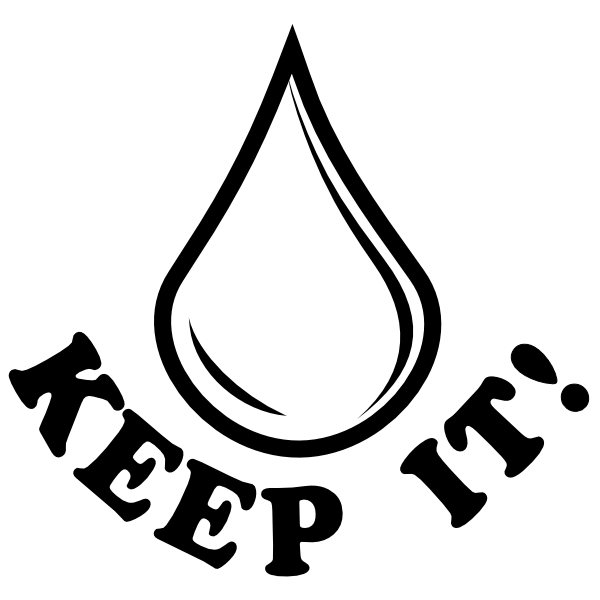May 2024
Nuclear Medicine Imaging
Nuclear medicine imaging involves using radioactive substances that are attached to compounds to either image or treat areas of the body. There is a risk of exposure to radioactivity through breastmilk or, more rarely, by being in proximity to the lactating parent after nuclear medicine procedures (see topic of PET scans and thyroid imaging below).
The excretion of various nuclear contrast agents into breastmilk varies greatly. Recommendations on whether to interrupt breastfeeding is determined by estimated radiation exposure to the child via breastmilk. The US Nuclear Regulatory Commission recommends limiting the nursing child’s total radiation exposure to no more than 1mSv (0.1rem).1
When lactation is interrupted, the parent should be educated on the option of saving the expressed milk. The radioactivity in the milk will gradually dissipate at a rate that varies depending on the radioactive substance and how much was excreted into the milk. It is advised to keep the milk in a freezer that is not opened frequently, to avoid individuals’ exposure to radioactivity. The nuclear medicine physician should give guidance on when the milk should be safe for consumption and/or offer to test the milk for radioactivity.1,2
For more detailed information and references on specific medications, please refer to LactMed, e-lactancia, Infant Risk, or Mother to Baby. There are many agents used in nuclear medicine imaging. While this article reviews some of the more common agents, please see this review for a more thorough list of agents and the Nuclear Regulatory Commission’s Report for more information on the use of radioactive substances during lactation.1,3
VQ Scans
Ventilation-perfusion (VQ) scans are used to evaluate for pulmonary embolism in individuals who are not candidates for other imaging strategies. Technetium-99m pentetate (Tc-99m DTPA) and Xenon-133 are used to assess ventilation and Technetium-99m macroaggregated albumin (Tc-99m MAA) is injected for the perfusion assessment.
A 12 hour interruption of human milk feeding is recommended for the perfusion contrast, Tc-99m MAA. No interruption is needed for the ventilation agents. Because all VQ scans need both ventilation and perfusion contrast, a 12 hour interruption is recommended for all VQ scans. It is advised that the individual express their milk regularly over the 12 hours and save the milk in the freezer. The radioactivity in the milk will gradually diminish, and can be given to the infant after 10 half-lives of the Tc-99m MAA, which would be 60 hours (or 2.5 days) after expression.1,2,4
Cardiac Imaging
Stress Tests
Not all cardiac stress tests use contrast. For example, some people walk/run on a treadmill without contrast. Contrast is added to stress tests to evaluate the blood flow through the coronary arteries during exercise.
Tc-99m sestamibi and Tc-99 tetrofosmin: Commonly used radionuclide contrast materials include Tc-99m sestamibi and Tc-99m tetrofosmin. Low doses of these compounds are excreted into breastmilk, and the recommendation by the Academy of Breastfeeding Medicine, with evidence from the Nuclear Regulatory Commission, is that no interruption in breastfeeding is required when using these Tc-99m compounds.1,2
Thallium-201: Thallium-201 is an older compound that was more widely used in the past for cardiac stress tests. Exposure of thallium-201 requires interruption of breastfeeding, so ideally this compound should be avoided during lactation. The recommendation for interruption of breastfeeding varies from 48 hours to 3 weeks, with the Nuclear Regulatory Commission recommending 4 days.1 The care of the lactating parent would need to be individualized, and testing the breastmilk for radioactivity would be reasonable with the use of Thallium-201 and alternatives are preferred.
MUGA Scan (Multi-Gated Acquisition Scan)
A MUGA scan uses a radioactive tracer to create a computerized image of the heart as it beats, to assess left ventricular function. The test typically uses technetium-99m pertechnetate as the radioactive tracer. Red cells are tagged with the technetium-99m pertechnetate, either by injected the radioactive tracer directly into the blood stream (in-vivo labeling), or by withdrawing blood, mixing the radioactive tracer, and re-injecting the blood (in vitro labeling). No interruption of breastfeeding is recommended for the in-vitro labeling, but interruption of about 60 hours is recommended for in-vivo labeling.2 It is ideal to consider an echocardiogram rather than a MUGA scan for lactating individuals, in order to avoid any contrast. Alternatives, such as an echocardiogram, are preferred for lactating individuals.
Renal Imaging
According to the Academy of Breastfeeding Medicine and the US Nuclear Regulatory Commission, the 4 radiopharmaceuticals used for kidney imaging include Technetium-99m pentetate (Tc-99m DTPA), Technetium-99m mertiatide (Tc-99m MAG3), Technetium-99m succimer (Tc-99m DMSA), and Technetium Tc-99m glucoheptonate. No interruption of breastfeeding is required for any of these agents according to the Advisory Committee on Medical Uses of Isotopes of the Nuclear Regulatory Committee and the Academy of Breastfeeding Medicine.1,2
Thyroid Imaging
The 3 radionuclides used in nuclear thyroid treatment and and imaging include 1-131, I-123, and pertechnetate Tc 99m.
Iodine-131 (I-131) is typically used to destroy thyroid tissue, mainly in cases of thyroid cancer or Graves’ disease. It has a long half-life, of approximately 8 days. This treatment requires complete cessation of lactation, starting 4 weeks before treatment. Cessation of lactation is required to avoid irradiating the breast tissue due to excretion of the radioactive material through breastmilk. Individuals treated with I-131 excrete radioactivity in their bodily fluids/waste, including tears, saliva, breastmilk, urine, and in stool, so it is recommended that they avoid close contact with others for 2-5 days after treatment. 1,2,5,6
Thyroid scans for imaging typically use I-123 and pertechnetate TC 99m. According to the Academy of Breastfeeding Medicine, recommendations for the interruption of breastfeeding vary when these contrast agents are used. Because there are other means of evaluating thyroid masses and hyperthyroidism, it is often reasonable to avoid these scans during lactation.2
Bone Scan
Bone scans are done to check for metastasis of cancer to bones. According to the Academy of Breastfeeding Medicine and the US Nuclear Regulatory Commission, technetium 99m-medronate (Tc-99mMDP) is used. Because very little is excreted into breastmilk, no interruption of lactation is recommended.1,2
PET Scan (Positron Emission Tomography)
PET scans are performed to aid in cancer diagnosis and staging. Fludeoxyglucose F18 (18F-FDG), the typical nuclear contrast used, demonstrates minimal to no excretion in breastmilk. No interruption of breastfeeding is recommended. However, this nuclear contrast concentrates in the non-lactating areas of breast tissue. It is recommended that the parent be apart from the child for 12 hours after the PET scan to prevent the child’s exposure to radiation. Because the contrast is not excreted into the breastmilk, the parent may express the milk and give it to the child.2,7
References
(1) Dilsizian, V.; Metter, D.; Palestro, C.; Zanzonico, P. Advisory Committee on Medical Uses of Isotopes (ACMUI) Sub-Committee on Nursing Mother Guidelines for the Medical Administration of Radioactive Materials. Federal Register. https://www.nrc.gov/docs/ML1903/ML19038A498.pdf (accessed 2024-01-12).
(2) Mitchell, K. B.; Fleming, M. M.; Anderson, P. O.; Giesbrandt, J. G.; the Academy of Breastfeeding Medicine; Young, M.; Noble, L.; Reece-Stremtan, S.; Bartick, M.; Calhoun, S.; Dodd, S.; Elliott-Rudder, M.; Kair, L. R.; Lappin, S.; Lawrence, R. A.; LeFort, Y.; Marinelli, K. A.; Marshall, N.; Murak, C.; Myers, E.; Okogbule-Wonodi, A.; Roberts, A.; Rosen-Carole, C.; Rothenberg, S.; Schmidt, T.; Seo, T.; Sriraman, N.; Stehel, E. K.; Fleur, R. St.; Wight, N.; Winter, L. ABM Clinical Protocol #31: Radiology and Nuclear Medicine Studies in Lactating Women. Breastfeeding Medicine 2019, 14 (5), 290–294. https://doi.org/10.1089/bfm.2019.29128.kbm.
(3) Naik, D.; Merai, H.; Klein, R.; Zeng, W. Duration of Breastfeeding Interruption in Nuclear Medicine Procedures. J. Nucl. Med. Technol. 2023, 51 (3), 239–246. https://doi.org/10.2967/jnmt.122.264910.
(4) Leide-Svegborn, S.; Ahlgren, L.; Johansson, L.; Mattsson, S. Excretion of Radionuclides in Human Breast Milk after Nuclear Medicine Examinations. Biokinetic and Dosimetric Data and Recommendations on Breastfeeding Interruption. Eur J Nucl Med Mol Imaging 2016, 43 (5), 808–821. https://doi.org/10.1007/s00259-015-3286-0.
(5) Sodium Iodide I 131. In Drugs and Lactation Database; National Institute of Child Health and Human Development: Bethesda (MD), 2006.
(6) Alexander, E. K.; Pearce, E. N.; Brent, G. A.; Brown, R. S.; Chen, H.; Dosiou, C.; Grobman, W. A.; Laurberg, P.; Lazarus, J. H.; Mandel, S. J.; Peeters, R. P.; Sullivan, S. 2017 Guidelines of the American Thyroid Association for the Diagnosis and Management of Thyroid Disease During Pregnancy and the Postpartum. Thyroid 2017, 27 (3), 315–389. https://doi.org/10.1089/thy.2016.0457.
(7) Fludeoxyglucose F18. In Drugs and Lactation Database; National Institute of Child Health and Human Development: Bethesda (MD), 2006.

